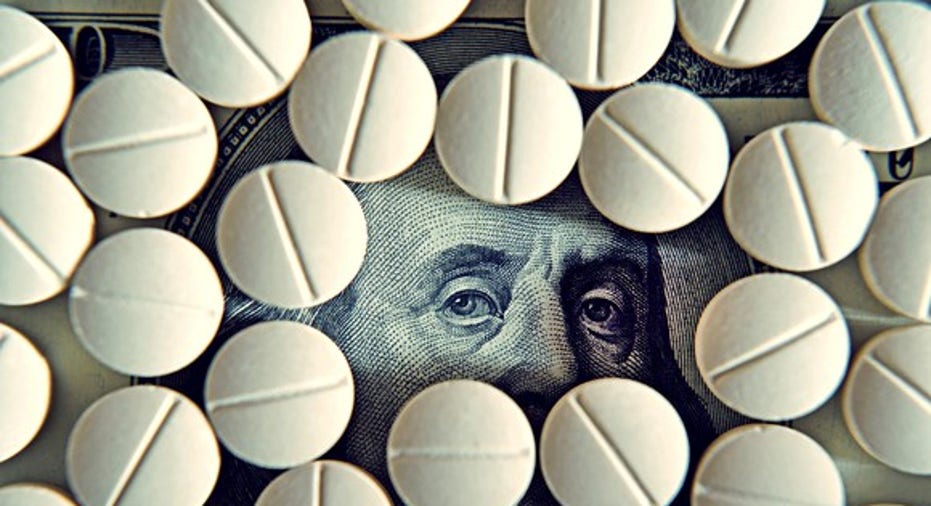Gilead Sciences Has Bought Back $10 Billion of Stock in 2016. Should Investors Be Happy?

The market has shown little appreciation for the acquisitive discipline Gilead Sciences (NASDAQ: GILD) has displayed this year. The stock has lost about 25% of its value in 2016, and management has taken advantage of the plunge by repurchasing about 100 million shares of its own stock.
Image source: Getty Images.
While it's nice to know the shares were purchased at knockdown prices, it's hard to remain cheerful when your stock price is sinking. Should Gilead's extensive buybacks help turn those frowns upside down? Let's have a closer look to find out.
Reasons to smile
Investors are generally of two minds when it comes to share buybacks. In the "pros" column, they're a fine way to return cash to long-term shareholders with a couple of benefits over dividend payments. Since profits used for buybacks aren't actually distributed, shareholders avoid paying higher taxes on realized capital gains as long as they hang on to their shares.
By lowering the number of shares outstanding, buybacks also boost earnings per share. At the end of September, Gilead's buybacks had reduced the outstanding share count by 7% compared with the end of 2015. Without this year's buybacks, third-quarter earnings of $2.52 per share would have come in at just $2.32 per share.
Reasons to scowl
Buyback "pros" offer little comfort in the face of some disturbing trends on the company's recent income statements. Despite a lower share count, earnings per share during the first nine months of the year fell 24% compared with the same period last year, as sales of Gilead's hepatitis C antivirals lost some pricing power to incoming competition from AbbVieand Merck.
In addition to shrinking sales of commercial-stage products, it's also run into a string of bad luck in the clinic. Late-stage flops from a myelofibrosis drug and a heart rhythm drug stung investors recently, and there have been too many early- to mid-stage disappointments to count this year. As a result, Gilead's stock has been beaten down to an eyebrow-raising 7 times trailing earnings at recent prices.
There has been no shortage of criticism heaped at the company for shoveling excess cash at its own stock instead of using it to make exciting acquisitions. It doesn't help that its peers have been engaged in an M&A frenzy.
Image source: Getty Images.
For example, AbbVie made a splashy move last year with a $21 billion acquisition of Pharmacyclics for rights to about half of Imbruvica sales, which might eventually add about $8 billion to its top line each year, and it was back in action again this spring with a $10.2 billion deal for Stemcentrx in order to secure rights to five cancer candidates still in early- to mid- stage clinical development. More recently, Pfizer shelled out $14 billion for Medivation, which included its prostate cancer blockbuster Xtandi, and a couple of late-clinical-stage candidates.
Why no shopping spree?
Gilead's operations generated a stunning $12.6 billion in free cash flow during the first nine months of 2016, so it certainly has the means to make big acquisitions. When asked why it isn't following in its peers' footsteps, management boldly states that the market is simply too dear.
We know the company has what it takes to spot a winner and race it through the regulatory process at breakneck speed. In many ways, this is the same biotech that risked $11 billion to acquire the compound that forms the backbone of its multibillion-dollar hepatitis C antiviral franchise today. However, that was in 2011, and a 178% rise in the industry-tracking iShares Nasdaq Biotechnology index since it announced the Pharmasset acquisition certainly supports management's austere stance.
Lights ahead
Although Gilead has shied away from outright acquisitions, it has engaged companies such as Galapagos NV with collaboration deals that involve little upfront but could be worth much more if they pan out in the clinic. Through the Galapagos partnership, Gilead has advanced filgotinib into late-stage studies for rheumatoid arthritis, Crohn's disease, and ulcerative colitis. If successful, peak annual sales of the drug could reach $3 billion, despite risking just $725 million upfront.
Further ahead, the company has three separate mid-stage candidates that comprise what is arguably the best shot at becoming the first effective treatment for non-alcoholic steatohepatitis. This underserved population represents a market estimated at about $15 billion annually.
Image source: Getty Images.
In the near term, America's largest pharmacy benefit manager, which once shunned Gilead's best-selling hepatitis C antiviral to date, has recently agreed to add the drug to its 2017 formulary.
These lights ahead won't send Gilead Sciences investors laughing all the way to the bank, but the company's future isn't nearly as grim as its ultra-low valuation suggests. Truckloads of free cash flow have to go somewhere, and I'd much rather see it spent repurchasing beaten-down stock than chasing overpriced biotechs.
10 stocks we like better than Gilead Sciences When investing geniuses David and Tom Gardner have a stock tip, it can pay to listen. After all, the newsletter they have run for over a decade, Motley Fool Stock Advisor, has tripled the market.*
David and Tom just revealed what they believe are the 10 best stocks for investors to buy right now... and Gilead Sciences wasn't one of them! That's right -- they think these 10 stocks are even better buys.
Click here to learn about these picks!
*Stock Advisor returns as of Nov. 7, 2016
Cory Renauer owns shares of Gilead Sciences. You can follow Cory on Twitter, @coryrenauer, or LinkedIn for more healthcare investing insight.
The Motley Fool owns shares of and recommends Gilead Sciences. Try any of our Foolish newsletter services free for 30 days. We Fools may not all hold the same opinions, but we all believe that considering a diverse range of insights makes us better investors. The Motley Fool has a disclosure policy.



















